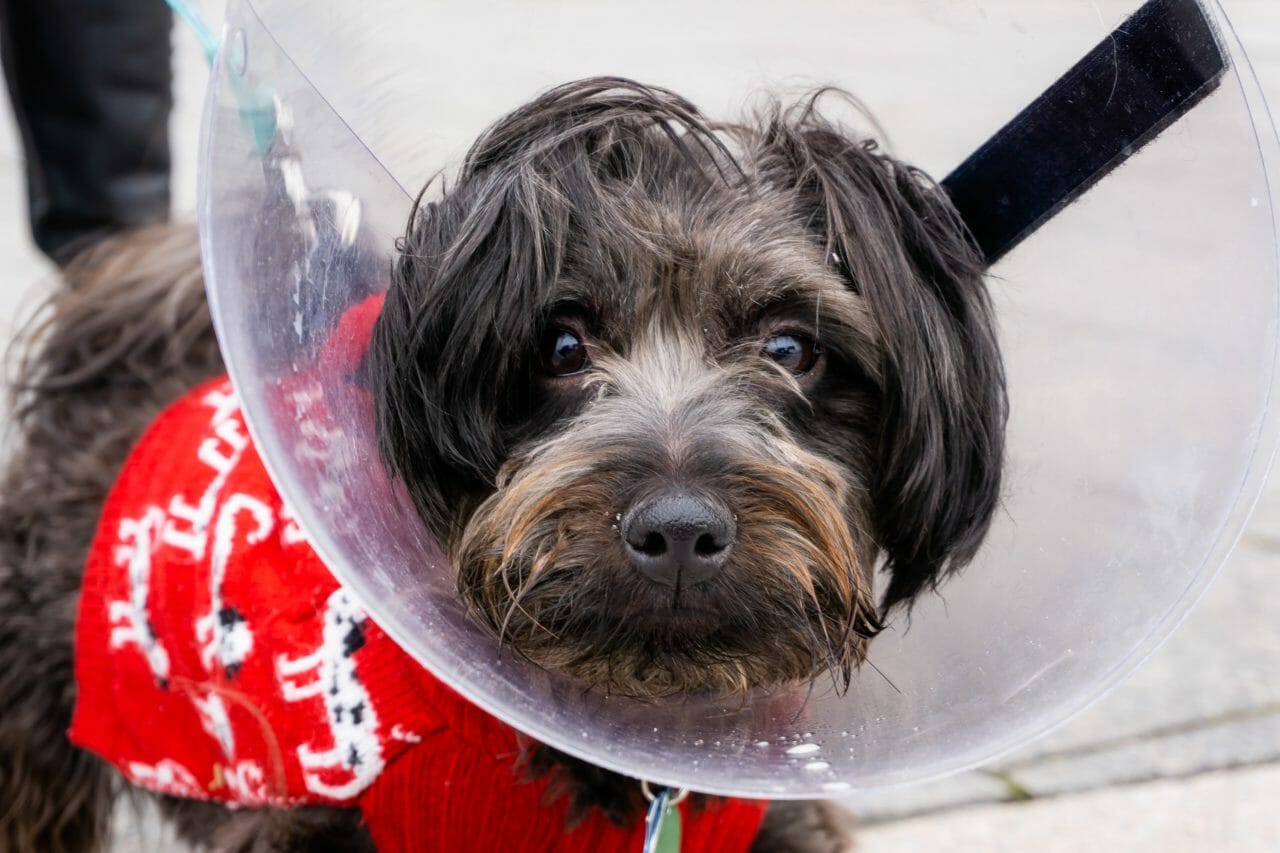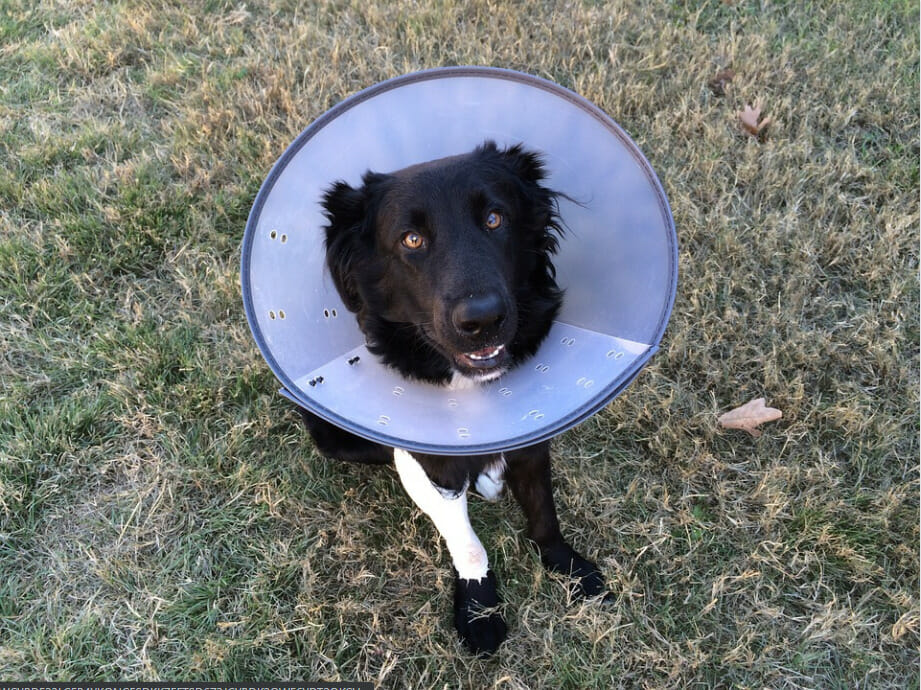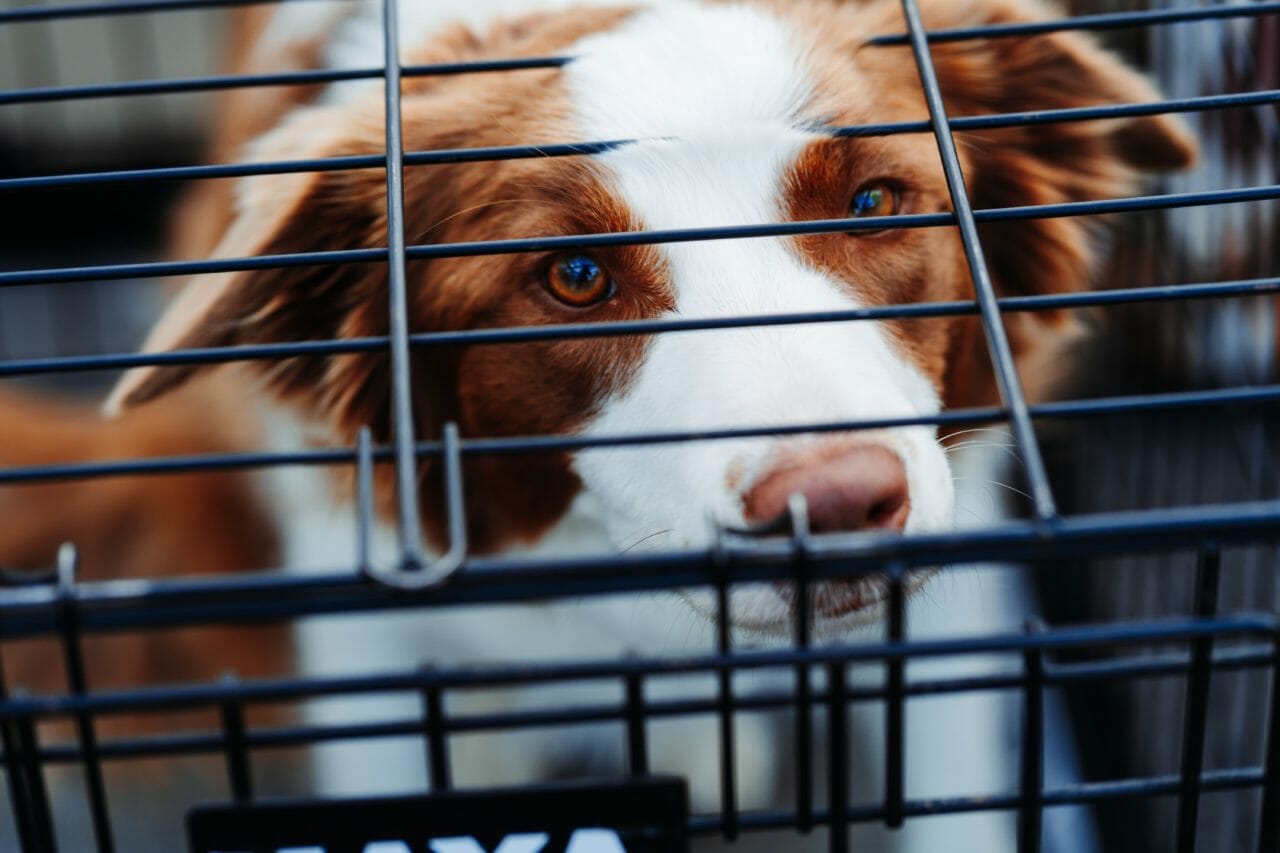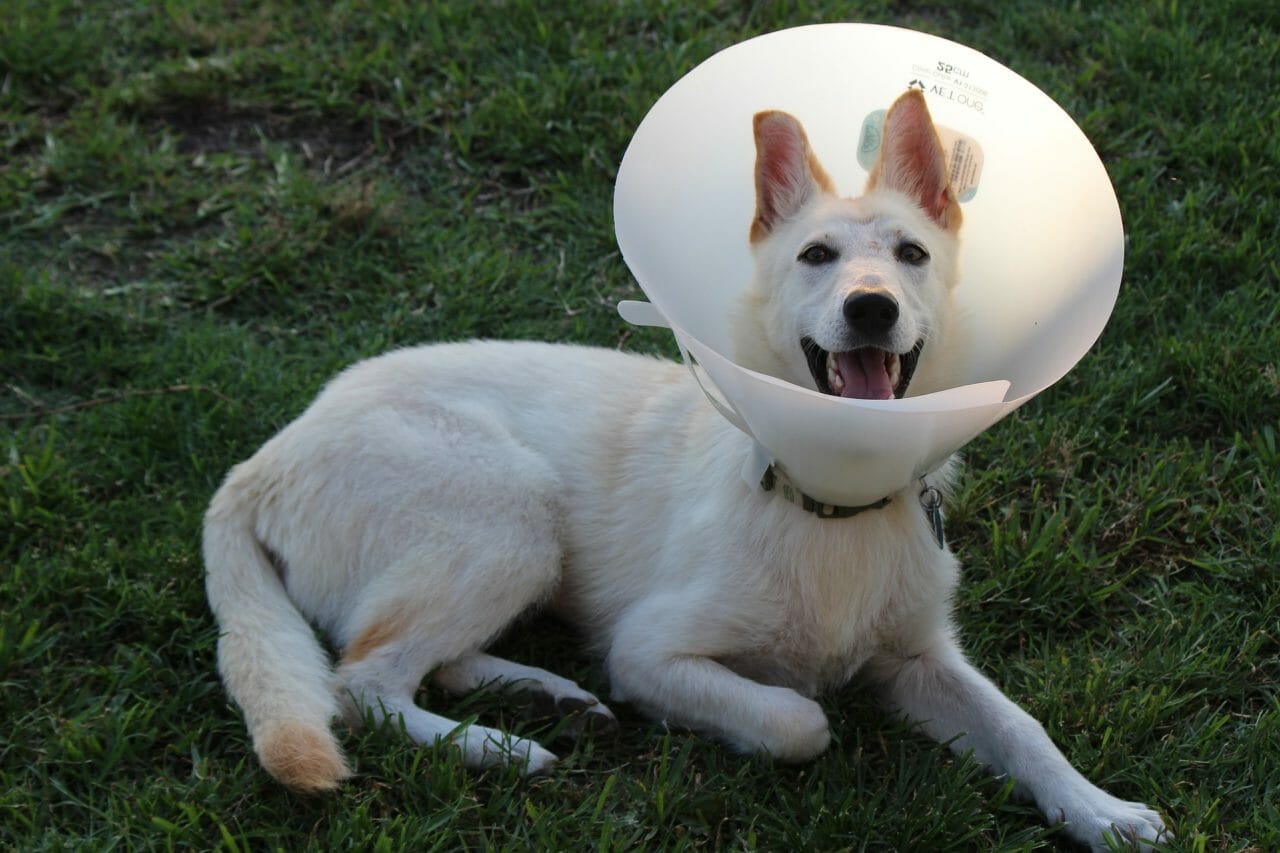While they might look silly, dog cones keep your pet safe and healing properly.
When it comes to our canine companions, we want to do everything in our power to ensure they’re happy and healthy. That’s why when something is wrong — whether it be a cut, surgery, or infection — many dog owners turn to cones as a way to help their pup recover.
In today’s blog, RehabPet.com will explore everything you need to know about dog cones, including answering the question, “Can a dog sleep with a cone on?”
Let’s jump into it.
What Is a Cone?
A cone — also called an Elizabethan collar or an E-collar — is a plastic, soft-sided, or inflatable collar that helps prevent your dog from licking, scratching, or biting at anything on its body.
This includes:
- Recent stitches
- Wounds
- Hot spots
- Rashes
- Infections
Cones come in different sizes, so ensuring that you get the correct size is important. Getting one too small can be uncomfortable for your pup, while getting one too big can make it easy for them to wiggle out of.
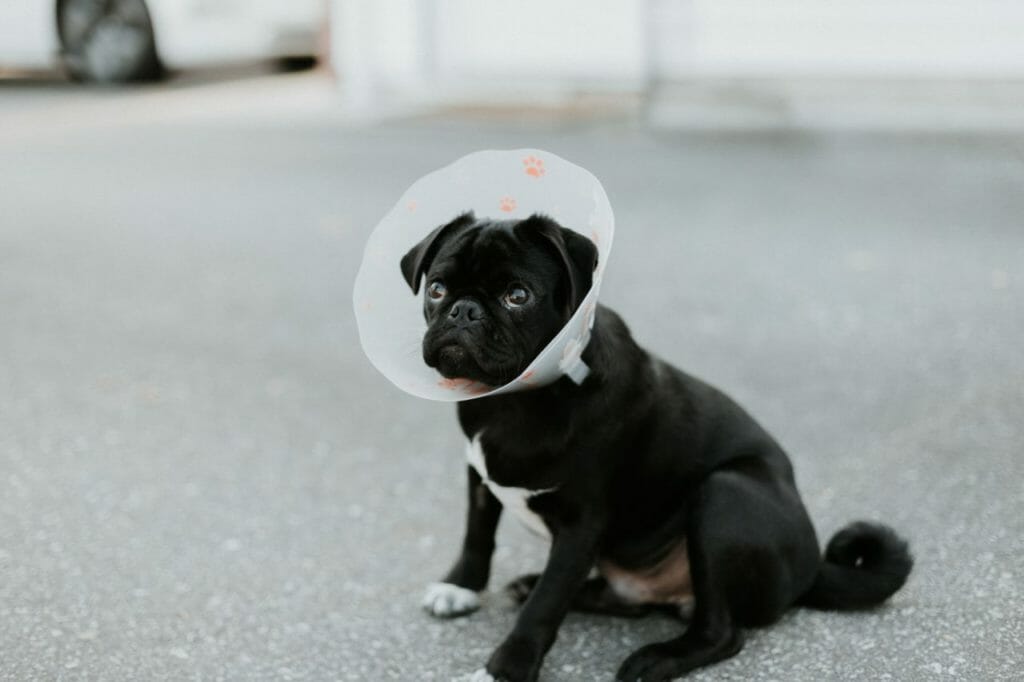
Why Do We Use Dog Cones?
Cones are used for various reasons, like protecting your dog’s eyes after surgery, but as we mentioned before, the most common is to prevent licking, scratching, or biting at a certain area on the dog’s body.
By using a cone, you’re giving your dog’s injury or wound a chance to heal without them disturbing it. Cones also help to prevent your dog from licking medications off its body or paws.
How To Get the Right Measurements for Your Dog’s Cone
If you plan on buying a cone for your dog, it’s important to get the right measurements.
You can do this by measuring the circumference of your dog’s neck and adding two to three inches to account for any movement. The best way to do this is to get a soft measuring tape and measure around the base of your dog’s neck.
If your dog moves around too much or you’re having difficulty getting an accurate measurement, you can also bring them to your local pet store so they can try on a few different sizes or help you measure.
What Types of Cones Can I Get for My Dog?
There are three different types of cones that you can get for your dog, and each has its own set of benefits and drawbacks.
The first type is the plastic cone, which is the most popular and affordable option. These cones are made of hard plastic and help support your dog’s head. The downside to plastic is that it can be uncomfortable for your dog to wear and they can easily knock it off.
The second type is the soft-sided cone, made from a softer material like nylon. These are a good option for dogs who are lighter in weight or have shorter necks. While much more comfortable for your dog to wear, they are also more expensive and can be chewed through.
The last type is the inflatable cone, which is similar to the plastic cone but is inflatable around the neck area of your dog for more comfort. This makes it more comfortable for your dog to wear and helps distribute the weight better, but if your dog is a chewer, it can easily puncture the cone.
No matter which type you choose, it’s important to ensure that the cone is the right size for your dog.
Can a Dog Sleep With a Cone On?
Now that we know a little more about cones, let’s answer the question, “Can a dog sleep with a cone on?”
The short answer is — it depends.
A cone won’t impede your dog’s airflow, as the cone doesn’t block their nose or mouth, but
if your dog is uncomfortable putting their head down while wearing the cone, it may have difficulty sleeping with a cone on. If this is the case, you may want to consider only putting the cone on during the day or if you think your dog will start getting at the wound or stitches if you take it off, one of the softer cone options is specifically for sleeping.
The cone allows your dog to do all of its normal day-to-day activities. This includes:
- Sleeping
- Eating
- Drinking
- Going to the bathroom
You’ll also want to ensure that your dog has a comfortable place to sleep, like their bed or a mat, and that they have plenty of room to move around. If your dog can sleep with a cone on without any issues, then you can leave it on overnight.
Just be sure to check on them periodically to make sure the cone hasn’t shifted and that your dog is still comfortable.
Are There Side Effects to Wearing the Cone?
Yes, a few side effects come with wearing the cone, but they’re usually temporary and not serious.
Some common side effects include:
- Less energy
- Trouble balancing
- Less interest in eating and drinking since it can be harder to do
Dogs may also paw at their face more to try to remove the cone. If you notice any of these side effects, don’t worry — they should go away after a few days as your dog gets used to the cone.
How Long Do I Leave the Cone on My Dog?
This will depend on the reason they’re wearing the cone in the first place. For example, if your dog had surgery, they may need to wear the cone for two weeks or more.
If your dog has an infection or a hot spot, they may need to wear the cone until the infection goes away or the hot spot heals. Talk to your vet about how long they think your dog should wear the cone and follow their instructions.
How Do I Make My Dog More Comfortable When Wearing the Cone?
There are a few things you can do to make your dog more comfortable when wearing the cone, like:
- Putting a soft cloth around the edge of the cone. This will help prevent your dog’s skin from getting irritated and make the cone more comfortable to wear.
- Giving them extra attention and treats. It’s never fun when your dog has to wear a cone, so this will help them feel loved and appreciated despite the annoyance they are putting up with.
- Using a pet-safe lubricant on the inside of the cone. Help prevent your dog’s fur from getting stuck on the cone and make removing it easier for them when you feel like they can go without licking or biting at the injured or infected area. This is recommended when you can keep an eye on them.
The Cone Won’t Be There Forever
Remember — the cone won’t be on your dog forever. It may seem like a long time, but eventually, they’ll return to their normal selves, and you can go back to life without the cone.
In the meantime, try to make the best of it and do what you can to make your dog comfortable as they get through their recovery, and when it finally does come off, treat them to their favorite activity or food to show them how happy you are that they’re finally cone-free!
